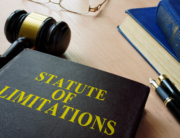If something is foreseeable, that means that it is reasonable that someone would anticipate the event happening. For example, a person who runs a red light at a busy intersection should realize the likelihood of colliding with another vehicle.
Foreseeability in a premises liability case plays an important part. The law usually uses the standard of a reasonable person, that being a person with ordinary intelligence and reasoning. In negligence cases, foreseeability refers to the concept that a reasonable person would have anticipated the consequences of an action or condition.
Why Foreseeability Matters in a Premises Liability Case
A property owner could try to avoid liability when someone gets injured because of a dangerous condition on the premises by claiming that:
- He did not know about the condition
- He did not realize that the hazardous condition was likely to hurt someone
With premises liability, the law will treat a property owner as if he knew about a dangerous condition if he knew or should have known about the hazard. If a reasonable person would have discovered the condition, the law will say that the owner should have known.
Also, injury from the hazard is foreseeable if a reasonable person would have anticipated someone getting hurt from the condition. The owner cannot escape liability by claiming that he did not realize the danger of the situation.
Things That Can Be Foreseeable
Here are some conditions in which injury is foreseeable:
- A person will trip on loose, unsecured cables strewn across the floor
- Exposed wires can cause electrical shock or electrocution
- Liquid on the floor can cause people to slip
There are many additional situations in which injury is foreseeable.
Things That Are Likely Not Foreseeable
These circumstances usually do not present foreseeable danger:
- Well-lit hallways
- Plumbing and electrical work that conforms to building code
- Clean, dry floors with no slipping or tripping hazards
However, there can be other factors, even in these circumstances, that can create a foreseeable risk of injury.
How a Property Owner Must Respond to Foreseeable Events
When there is a foreseeable risk of injury, under FL § 768.0755 the landowner must take reasonable measures to correct the condition or post adequate warnings to prevent harm. A property owner who fails to respond to a foreseeable danger can be responsible to people who get hurt. An injured trespasser however, might not be liable to claim compensation from the property owner under FL § 768.075. Call the Montero Law Center today at (954) 767-6500 for more information.
Let’s say that a sinkhole suddenly appeared at an amusement park. It is foreseeable that a guest would be curious and walk too close to the edge of the hole.
The owner should block off the area and post warnings to prevent people from falling into the pit. The landowner should also explore ways to correct the hazard. If the owner ignores the situation, does not explore measures to fill the sinkhole, and does not block off the area and post warnings, the owner can be liable to people who get hurt by falling into the sinkhole.
If you were hurt on someone else’s property because of someone else’s carelessness, a premises liability lawyer can help. At the Montero Law Center, we understand the importance of foreseeability in a premises liability case and care about what happens to you. We will work hard to get you all the compensation you deserve for your losses. Call us today at (954) 767-6500 for your free consultation. There is no obligation.
 English
English  Español
Español 



